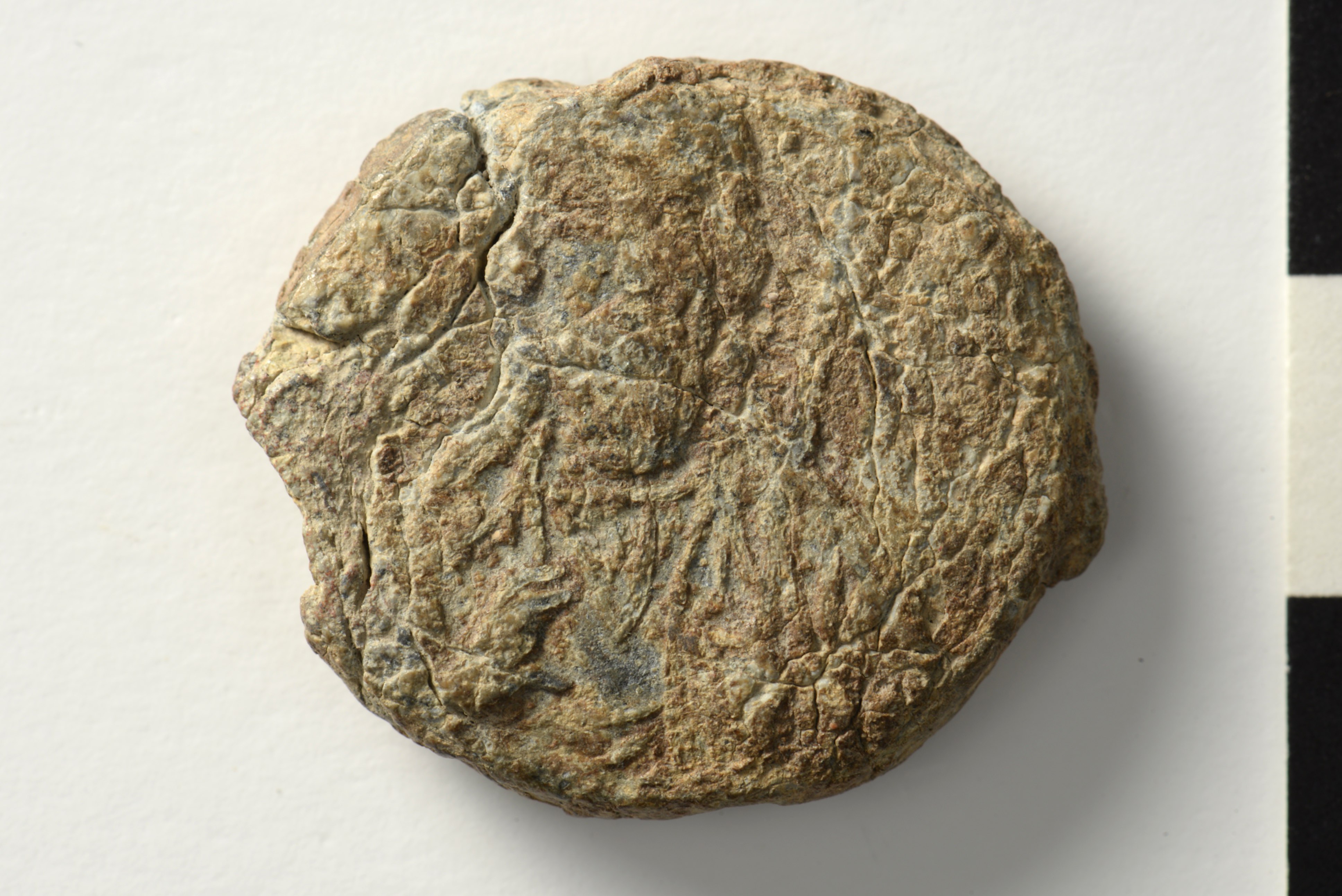N. Abalantes (?), protospatharios, exaktor, judge of the Hippodrome and of the Opsikion guarded by God (eleventh century)
Obverse
Faintly printed bust of a bearded saint blessing with his right hand, perhaps St. John the Baptist; other details indistinct. Along the circumference, remnants of an inscription:
δουλ
[Κύριε βοήθει τῷ σῷ] δούλ[ῳ]
Obverse
Faintly printed bust of a bearded saint blessing with his right hand, perhaps St. John the Baptist; other details indistinct. Along the circumference, remnants of an inscription:
δουλ
[Κύριε βοήθει τῷ σῷ] δούλ[ῳ]
Reverse
Inscription of six lines. No visible border.
.ασπ
ξακτ,ρ,.
τηεπιτ,ιπ
δρ,τθ..φ
τοψη...
.Rαλα
[...] (πρωτο)σπ[αθ(αρίῳ), ἐ]ξάκτ(ω)ρ(ι), [κρι]τῇ ἐπὶ τ(οῦ) Ἱπ[πο]δρ(όμου) τοῦ θ[εο]φ[υλάκ]του Ὀψη[κίου τῷ Ἀ]βαλά[ντῃ]
| Accession number | BZS.1951.31.5.1890 |
|---|---|
| Diameter | 27.0 mm |
| Previous Editions | DO Seals 3, no. 39.20. |
| Credit Line | Harvard Art Museums/Arthur M. Sackler Museum, Bequest of Thomas Whittemore. |
Translation
Κύριε βοήθει τῷ σῷ δούλῳ ... πρωτοσπαθαρίῳ, ἐξάκτωρι, κριτῇ ἐπὶ τοῦ Ἱπποδρόμου τοῦ θεοφυλάκτου Ὀψηκίου τῷ Ἀβαλάντῃ.
Lord, help your servant ... Abalantes, protospatharios, exaktor, judge of the Hippodrome and of the God-guarded Opsikion.
Bibliography
- Les listes de préséance byzantines des IXe et Xe siècles (Open in Zotero)
- Byzantine Lead Seals, Vol. 1 (Open in Zotero)
- Byzantine Lead Seals, Vol. 2 (Open in Zotero)
- Documents de sigillographie byzantine: La collection C. Orghidan (Open in Zotero)
- Les sceaux byzantins de la Collection Henri Seyrig (Open in Zotero)
- De Thematibus (Open in Zotero)
- Byzantinische Rang- und Ämterstruktur im 8. und 9. Jahrhundert: Faktoren und Tendenzen ihrer Entwicklung (Open in Zotero)
- Die byzantinischen Bleisiegel in Österreich, Vol. 1, Kaiserhof (Open in Zotero)

Commentary
The reading of the family name is not secure. The known members of the family of Abalantai/Balantai are listed by Seibt, Bleisiegel, no. 159.
Opsikion was one of the earliest themes of Byzantium; its name from the term obsequium (retinue), often called "imperial obsequium guarded by God." Its territory included many provinces and initially encompassed all northwestern Asia Minor; by the mid-eighth century it was subdivided, and the new themes of the Boukellarioi and of the Optimatoi appeared. All three names show that the origins of this theme are to be sought in the regiments of the imperial guard, and according to some scholars, to the milites praesentales of the fifth century.
The commander of Opsikion traditionally bore the titles of komes, probably because initially he was identical to the comes domesticorum. He is first attested in 626 (perhaps already in 615), and, because of his proximity to Constantinople (his residence was in Nicaea), he played an important role in imperial politics. As this happened regularly with all units of the imperial guard, the tagmata (Listes, 329), the second in command of the Opsikion was called for quite some time a topoteretes (cf. Zacos-Veglery, no. 1762). The province was organized as all other themes (with tourmarchai, anagrapheis, judges, protonotarioi, chartoularioi, strateutai [Laurent, Orghidan, no. 218], etc.), and, already in the ninth century, the commander was also called a strategos (see Listes, 264, footnote 23; Zacos, Seals II, no. 850; Seyrig, no. 191).
The littoral of the Opsikion was also part of the theme of Aigaion Pelagos.
See Pertusi, in De Them., 127-30; Winkelmann, Ämsterstruktur, 72-76, 119-20; ODB III, 1528-29; Haldon, Praetorians, passim, esp. 164 ff; T. Lounghis, "A Deo conservandum imperiale Obsequium," ByzSl 52 (1991) 54-60.